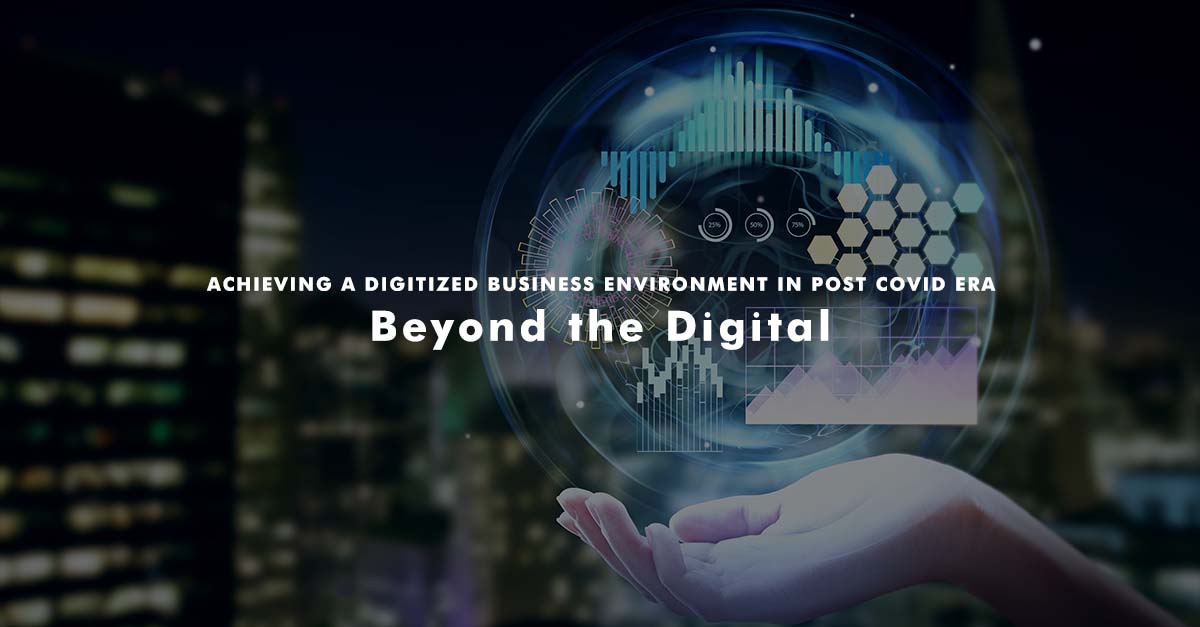
Achieving a Digitized Business Environment in post COVID era: Beyond the Digital
“The digital transformation is not only about transforming business environment processes but also about empowering people to work in new ways.”
Business process digitization
Digitization of business processes refers to using the available raw data and converting it into digital formats.
Digitization of business processes makes the entire workflow easier, accessible, and smoother.
Since the COVID-19 pandemic has emerged, Industry 4.0, or the Digital Revolution, has prevailed in the market, making businesses adapt to digital technologies more than ever.
Talks of digitizing the business processes have been the talk of the market for a few decades. Investing in digital tools remains one of the topmost priorities among businesses.
However, there are businesses across the sectors that are still susceptible to investing in digital practices.
Furthermore, achieving a business resilient stakeholder engagement and a digital business environment remains one of the topmost priorities amongst the businesses.
According to a recently conducted survey, 38% of respondents reported having a higher digital practice maturity rate since the COVID-19 pandemic merged.
Challenges To Complete Digitization
Just like the opportunities that Digitization of business processes offers, it also presents the businesses with many challenges that are harder to manage if not taken effectively.
Lack Of Expertise
Digitization is a process that is expert-centric. Old traditional methods of collecting the data, analyzing it, and deriving the insights from it to make business decisions are no longer in usage as far as the business processes are concerned.
New challenges need new solutions. Hence, revolutionizing digital practices takes into account the significant digital data usage which fetches the desirable results.
But the lack of expertise causes the businesses to suffer as it fails to leverage upon the opportunities it offers.
Lack Of Active Participation
Many businesses have been able to navigate the challenges that the pandemic has thrown.
Still, some businesses are struggling due to a lack of robust participation from their stakeholders.
Achieving a business initiative tends to become difficult without active participation from the stakeholders, right from the clients to the C-level executives.
Improper User Experience
As digital practices have emerged, the user experience, too, has turned into a digital user experience.
Many businesses view technology as a medium to save money and reduce unnecessary spending.
While the data gets analyzed, the lack of proper digital tools results in a satisfying user experience.
Digitization of Business Practices – Beyond the Digital:
Digitization of business processes is one of the cost-cutting measures by businesses.
Furthermore, the prevalence of digitized business practices has also resulted in rising concerns for data security and cybersecurity.
Hence in the new digitized world, cybersecurity practices are on the rise.
With the surge in remote work, many industries have recognized the importance of increasing cybersecurity spending.
With the rise in revenues forcing budgets to shrink, the significance of cybersecurity has become a priority for companies across industries.
However, the rising business innovations and emerging technologies get achieved with a well-defined business strategy that embeds digital strategy.
Stakeholder Engagement:
Stakeholders are the backbone of any business practice.
From the clients to the C-suite executives, stakeholders all form an integral part of the digitization processes.
The active participation of all achieves stakeholder engagement by leveraging the power of data.
Business decisions are no more taken based on intuitive insights.
These days, business decisions are derived from data-driven methodologies.
It makes use of the data and improvises on the data realization with emerging technologies.
Public-Private Partnership:
The efforts to bounce from the pandemic testify how working together for everyday cause triumphs over it. The same goes for public-private partnerships. Upgrading the infrastructure around digital and innovation is critical for business continuity.
Timely up-gradation of business continuity plans serves the present business scenario and caters to the future.
PPP models are not achieved by the action of one company or country alone, and it requires massive investments as well.
By harnessing the potential that exists in stakeholders across the businesses collaborate by radically rethinking the value chains to make a digital environment.
Creating Value of Customer Data:
Leveraging the power of data result in achieving digitization practices quicker than other practices.
In the current age of information, the actionable insights derived from the customers’ data result in a successful organization.
Data matters, but actions matter most.
One of the biggest obstacles in front of CMOs is the unavailability of quality customer data.
Without third-party integration and data sources connected from inside and outside the organization deriving the customer insights can’t materialize.
Furthermore, practices such as maintaining data compliance with privacy regulations result in more relevant practices.
Conclusion – Digitized Business Environment:
Digitization of the business practices is the way to go for the organizations.
When few businesses are still vulnerable to investing in digital technologies, few still find it challenging to adapt to digital technologies entirely.
Having tools and processes that combine stakeholder engagement and the power of data result in a digital business environment. You can contact Leader Group and get Management Consultation service





